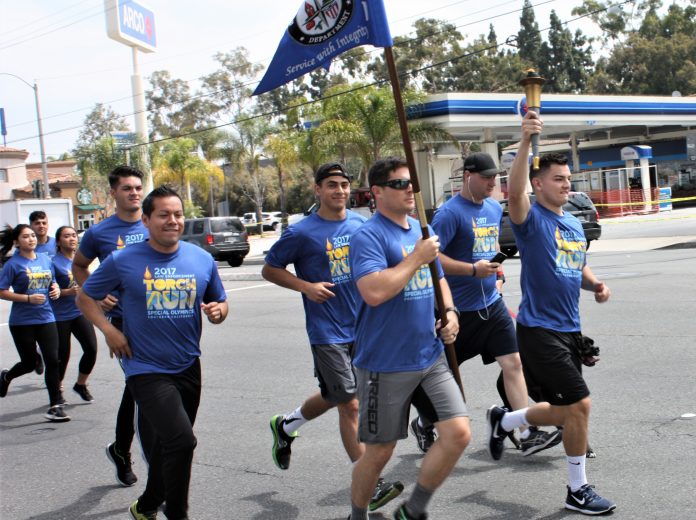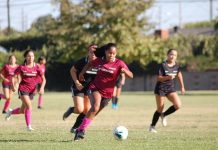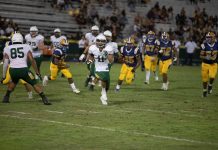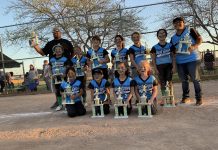Garden Grove and Westminster residents knew something special was going on when a torch runner raced through their city over the weekend.
Later, a joyous energy filled the Jack Rose Track and Field Stadium at California State University, Long Beach, over the weekend.
An estimated 1,100 Special Olympics athletes, law enforcement personnel, volunteers, families and staff members were focused on celebrating the athletic efforts of the participants.
Garden Grove and Westminster residents knew something special was going on when a torch runner raced through their city over the weekend.
Later, a joyous energy filled the Jack Rose Track and Field Stadium at California State University, Long Beach, over the weekend.
An estimated 1,100 Special Olympics athletes, law enforcement personnel, volunteers, families and staff members were focused on celebrating the athletic efforts of the participants.
“Our team members will compete in running, softball throw, and long jump,” said Jennifer Purcell, one of the coaches for the OC/Huntington Beach Road Runners. “We’re a track and field team.”
The 17 team members surrounding her were part of the almost 200 team members from Orange County. Most were wearing their Orange County Special Olympics T-shirts, ready to begin the competitions.
“Our group has been training for seven years,” said Purcell. “Our team members are age 8-49 and we practice at Golden West College.”
“I get to run the 100 and 200 meters today,” said Rudy Briseno, 22, from Kern County. “Tomorrow I get to run a relay with my team.”
His enthusiasm was felt from athletes throughout the crowd as they attended the opening ceremony.
In addition to speakers, singers, and sponsors, the opening event highlights were the arrival of the torch runner and a presentation by American former decathlete and actor, Rafer Johnson.
The torch runner was accompanied by law enforcement officers and K-9s. The arrival was the culmination of a Law Enforcement Torch Run that weaved its way through various communities in Southern California. The day before the Olympics, police officers from Westminster, Garden Grove and Cypress took turns carrying the torch through their cities.
The torch run is represented in all 50 states and around the world with 97,000 officers raising more than half a billion dollars since 1981. The Southern California run is supported by 200 law enforcement agencies.
The impressive opening ceremony featured a flyover by local law enforcement agency helicopters, accompanied by sirens, to the delight of the crowd. A contingent of hundreds of officers from Southern California agencies, surrounded the athletes in a semi-circle on the running track, providing their visible support for the event.
“The Special Olympics track and field events are emotional and the most popular events,” said John Shaffer, media relations and social media manager. “We have Winter and Summer World Games and USA Games. They alternate every four years. The Winter Games will be in February and March 2018 and the USA Games in Seattle will be in July 2018.”
The event in Long Beach was for Southern California athletes who come from San Luis Obispo to the southern border near Mexico. Most states have state games, but California is so large it is divided into two areas, north and south, which each hold games.
“Orange County is our largest delegation with 171 athletes expected,” said Shaffer. “Los Angeles is large, but is divided into sub-regions.” This means they register as smaller groups, as opposed to Orange County, which is all one group.
“This event is free and we have athletes from age eight through seniors,” added Shaffer. “It’s remarkable.”
Events held over the weekend included: basketball, bocce, swimming, gymnastics, and golf. Interspersed through the weekend were Rafer’s Boutique, family pavilion, a festival, performances by dance teams, a chorus and musical groups. A DJ performed and a dance was held for athletes.
Special Olympics offers more than 28,000 athletes with intellectual disabilities the opportunity to participate in sports, leadership and health programs. These activities help participants become more independent, build self-esteem and live healthier lives. Communities can benefit by accepting and encouraging participants, by volunteering, sponsoring, or contributing financially.












